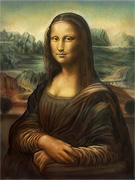why does waves look like crescents when viewed from the side?
here one must picture static, frozen waves, viewed from the side. each wave possesses a hollow into which it usually collapses when the wave breaks. this hollow is created by the water of the previous wave as water flows backward from that wave’s highest point and strikes the following wave. not only does this backward-flowing water cause the hollow in the following wave, it also causes this wave to reach its highest point, so that in turn water is sent backward to the oncoming wave.

![]()
moving
- why does something move?
- how can flowing water consume its momentum when it encounters an obstruction?
- why are the waves of descending rivers slower than the water flow of the river itself?
- why does a body move when something strikes it?
- under what conditions can a person on a see-saw not jump up?
- what happens to the waves when water crashed into an obstacle?
- what effects do the slope of the obstruction and the angle of impact have?
- why doesn't viscous water flow continually throungh a bent pipe?
- does the weight of water vary according to how one changes the slope of a pipe filled with water?
- how can one see that movement separates from its cause?
- where does the wave break?
- what causes cyclones?
- can a special dam influence the impact of the water?
- what must an especially strong dam look like?
- how can one simulate the collapse of a wave?
- how does air, once it is immersed, escape the water?
- what machine can be used to ram piles into the ground?

